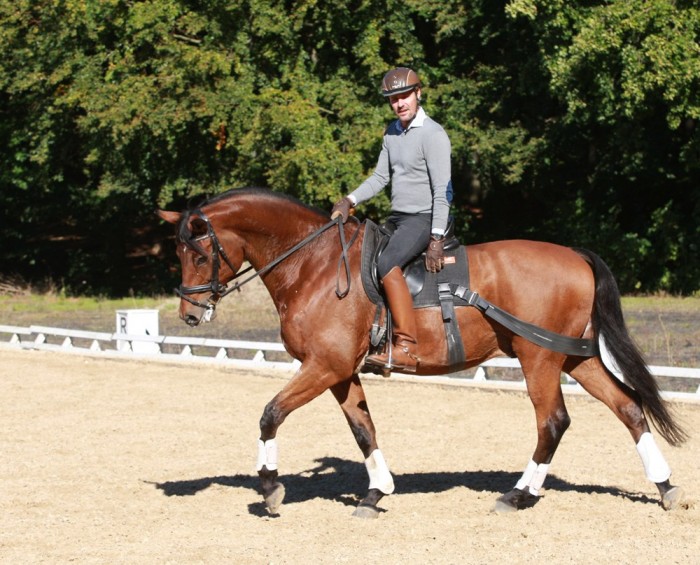
The effect of an equine resistance band training regime
We aim to improve our horse’s performance through various exercises; striving for relaxation, engagement of the hindquarters, and balance. In human rehabilitation programs, resistance bands are often used to increase core stability and thus increasing muscle activity of the pelvis and lower back. This study investigated if this effect was present in our equine partners as well.
For 4 weeks 7 horses were trained in-hand, on the lunge, and ridden with resistance bands. Rotational and translational movements were recorded in walk and trot. The measurements were made at the start of the regime and after 4 weeks. Each training was standardised and equal for each horse.
The results are promising: range of motion decreased immediately when using the bands. Roll and pitch of the withers and both thoracic and lumbar mediolateral movements were significantly reduced. The effect was larger during lunging than in-hand. The resistance bands provide proprioceptive feedback, encouraging the horse to engage the abdominal and hindquarter musculature, facilitating muscle development and core stability. The results imply that the usage of bands leads to greater dynamic stability, which was also felt by the riders.
Expert opinion by Charlotte de Bruyne
Due to the lack of a control group, it is impossible to state that the long-term results were obtained by the use of the bands, and not by the training regime alone. However, the short-term results are promising: using resistance bands will help you stimulate your horse to use the right muscles. Other studies have shown that using the Pessoa training aid can help engage the core as well, but this tool cannot be used while riding.
> From: Pfau et al., Equine Vet J 49 (2017) 829-835 (Epub ahead of print). All rights reserved to Royal Veterinary College London. Click here for the online summary.


